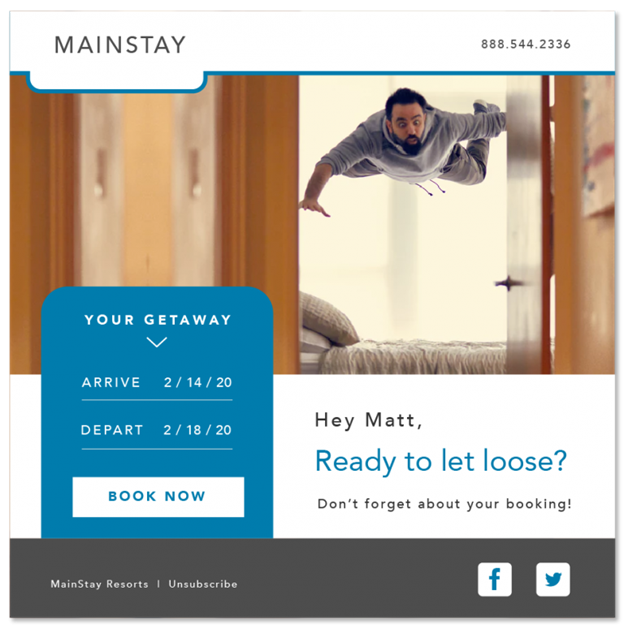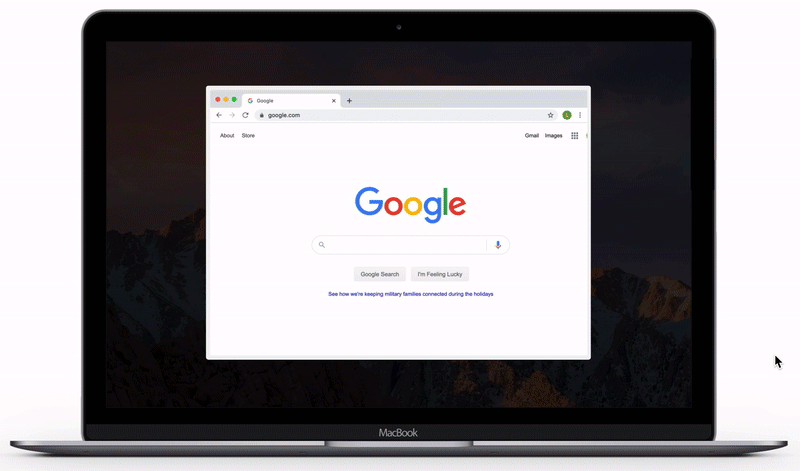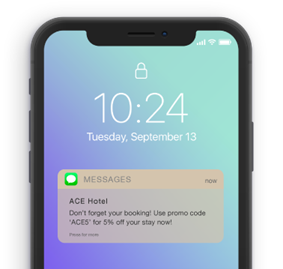Guest Blog: How to Recover Lost Bookings & Increase Revenue
Wanderlust is at an all-time high. Two-thirds of people plan to take a vacation this year, with one in three people having already booked it.
People are eagerly recommencing their travel plans and making up for lost time. But while this is causing a surge in holiday bookings, it’s also causing a rise in booking abandonment.
The rise in online visitors, the change in booking motivators, and the neglect of your abandonment strategy, lead to unprecedented website abandonment levels. However, where there’s abandonment, there’s an opportunity to recover guests and increase revenue.
In this week’s blog, booking abandonment experts, CartStack, explains why abandonment is a good thing and how you can recover lost bookings, increase revenue, and take advantage of the year ahead with a handful of simple techniques and tools.
Content:
- The State of Booking Abandonment in 2021
- How to Recover Booking Abandonment: The Funnel of Success
- On-Site Tools for Recovering Booking Abandonment
- Re-engagement Tools for Recovering Booking Abandonment
- Additional Tools for Enhancing Success
- Conclusion

I.The State of Booking Abandonment in 2021
Hotel booking abandonment is at 87.55% – that’s nearly nine out of every ten visitors to your website leaving before finalizing their purchase.
And the worst part about this figure? It’s going to get worse before it gets better for three reasons:
1. A rise in hotel bookings
2020 was the worst year in tourism history, but as vaccination rates increase, so do vacation rates. Naturally, a rise in people booking hotels and accommodation will spark a surge in people abandoning bookings while they shop around.
2. Comparison shopping
Speaking of comparison shopping, guests will do more of it. People are becoming increasingly confident shopping online, which means they’ll spend more time comparing prices, researching the area, seeking reviews, and abandoning your website while they do so.
3. Booking motivators and blockers
Travelers will naturally be a little more cautious about hotels and a little more conservative with their cash. This could increase the number of touchpoints required before conversion, which could take hours, days, or weeks instead of minutes.
However, this isn’t all doom and gloom; it’s a good thing. At CartStack, we see booking abandonment as an opportunity to:
- Increase the number of leads you can nurture to acquisition.
- Segment leads according to where they left during the booking journey.
- Understand why abandonment is happening on your website.
Ultimately, a booking abandonment is your chance to recover a lost booking and increase revenue – but only when done right.
II.How to Recover Booking Abandonment: The Funnel of Success
The booking funnel has five key stages:

Pre-COVID, your booking recovery strategy likely started and stopped at the acquisition stage: a customer reached the booking confirmation page, entered their details, but failed to click the confirmation button.
Today, your booking abandonment strategy must focus on the first three booking funnel stages: awareness, consideration, and acquisition. By focusing on all three phases (instead of just one), you maximize your potential to recover lost bookings by targeting:
- Cold leads: active website visitors who haven’t yet abandoned their booking.
- Warm leads: website visitors who abandoned before the booking confirmation page.
- Hot leads: website visitors who abandoned on the booking confirmation page.
To target these three different leads, you need a combination of on-site, re-engagement, and recovery tools.
III.On-Site Tools for Recovering Booking Abandonment
On-site booking recovery tools target your cold leads to get them to and through the booking confirmation page before leaving your website. Three popular tools for achieving this are:
1.Exit-intent offers
Exit-intent offers appear on a booker’s screen as their cursor moves towards the exit button. They attempt to disrupt the exit by presenting information that overcomes the reason for leaving or gives a reason to stay.
For example, common hotel exit intent offers are:
- A reminder about your best-price guarantee.
- A coupon for a free drink on arrival.
- Information about your different payment options.
2.Abandoned tab notifications
An abandoned tab notification is a new type of alert that’s triggered when a person opens a new tab in their browser. These alerts can snap customers out of aimless procrastination (we’ve all been there!), remind them you’re there, and prevent them from accidentally closing your tab.
When choosing an abandoned tab notification tool, look for the following features:
- An audible chime when the shopper opens a new tab.
- A change in the tab’s favicon.
- A change in the tab’s headline text.
Together, these make your website’s tab visible, compelling, and unforgotten.
3.Real-time abandonment notifications
Real-time abandonment notifications are alerts you can customize to notify your sales team when abandonment meeting specific criteria happens. For example, a booking over $1,000 or for over seven nights. This enables you to implement a manual outreach step for high-value abandonment, for example, calling the customer to assist (and sell).
IV.Re-Engagement Tools for Recovering Booking Abandonment
Even with the best will in the world, booking abandonment will happen on your website. However, this isn’t a problem when you have the right tools for recovering booking abandonment.
Three customer recovery tools that should feature in your remarketing toolkit are:
1.Booking abandonment emails
Booking abandonment emails are emails sent to website visitors following abandonment. Typically, they form part of a drip-feed email campaign that includes three emails sent at different times following abandonment.

There are many best practices to follow when sending booking abandonment emails, but our favorites are:
- Personalization: tailoring emails to the intended audience by including details about their proposed booking and the rooms they looked at.
- Urgency: creating a sense of urgency by telling bookers you’ve held their booking, but they need to be quick before someone else books it.
- Ease: using a clear CTA that makes it easy for visitors to recommence where they left off.
2.Booking abandonment push notifications
Booking abandonment push notifications are in-browser messages that appear following abandonment. The beauty of push notifications is that customers must opt-in to receive them (demonstrating high booking intent), and they don’t have to be on your website to receive them (making it easier for you to reengage them before it’s too late).

Our top tips for booking abandonment push notifications are:
- Timing: send three notifications following abandonment: 20-30 minutes after, 1-2 days after, and 3-5 days later.
- Image: use an eye-catching and relevant image that attracts attention and reignites those vacation emotions.
- Wording: you have little space to use, so be clear and to-the-point.
3.Booking abandonment SMS
Booking abandonment SMS are text messages sent to potential guests following booking abandonment. Like emails, these typically form part of a drip-feed campaign, but you don’t rely on inbox visibility to be seen, unlike emails.

The best practices for sending booking abandonment text messages are:
- Introduction: establish familiarity quickly, so customers trust your message and don’t classify it as spam.
- Mobile-responsiveness: make sure you optimized your website for mobile use, as that’s the device these customers will be using.
- Opt-out: always include an easy way to opt-out of future SMS messages and campaigns.
V.Additional Tools for Enhancing Success
In addition to on-site and booking re-engagement tools, there is a handful of tools that facilitate booking recovery. These are:
- Real-time lead capture: a tool that records a visitor’s information as it’s typed onto your website, allowing you to use it for booking recovery campaigns.
- Form auto-fill: a tool that uses cookies to record information from a visitor’s previous session to repopulate the booking details and reservation information upon their return.
- A/B testing: a tool that allows you to split-test different email campaigns or exit intent offers so you can pinpoint the tactics that work best for your audience.
VI.Conclusion
Wanderlust is high, and it’s about to burst across the world. But, while an increase in people researching vacations leads to an increase in people abandoning bookings, this doesn’t have to lead to a decrease in revenue.
Tools such as CartStack’s suite of booking recovery tools, reduce booking abandonment from happening in the first place, and increase your chances of recovering guests when it does. See for yourself with a free 14-day trial.
